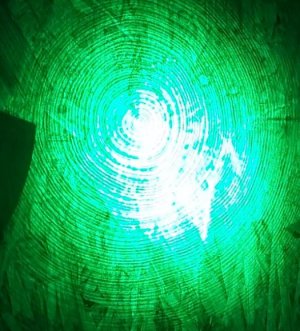Would the fresnel lens not mess up coherence? It probably will.For a beam expander, a simple telescope works; maybe a microscope objective lens, nice short
focal length, to fan the beam out, and a plastic Fresnel panel to re-collimate it; once the beam is
expanded, it cannot be much hazard to your eyes (hey, most of a footwide beam will miss your eyeball).
Since the light is monochromatic, color-corrected lenses aren't required.
The projection setup project requires the expanded beam to cover the area of biggest optical flat I have (6in) and be only slightly divergent at this size. Let's say to 8in at a distance of 10in. So the laser can be mounted 10in above with an 8in screen next to it. The beam travels down 10in bounces back off the optical flat and the item and returns to the projection screen.
So the second lens you suggested a fresnel one for needs to be quite large in diameter (4in)and be close in power to the first lens. Finding a large diameter lens of sufficient power is a challenge.
Hmm, I do have an old broken big screen lcd TV around... But the bottle works tooThe inner layers of the light panel behind a dead LCD display include good white
translucent material (is there a dead display somewhere in the closet?).

